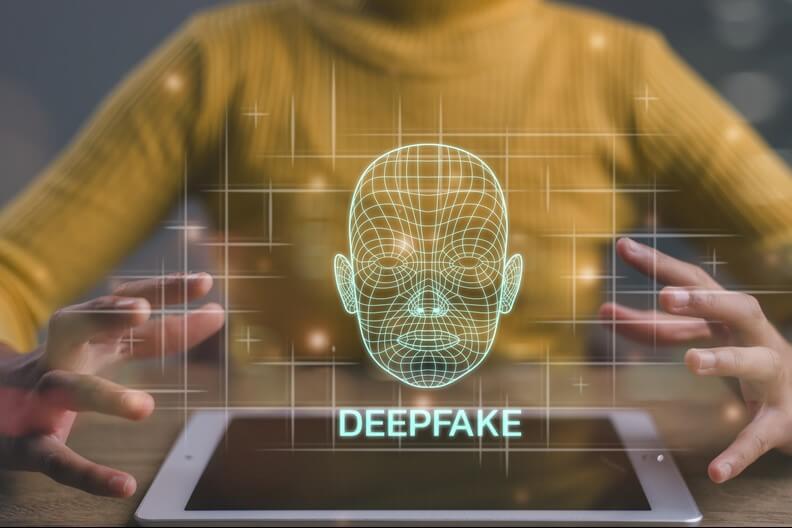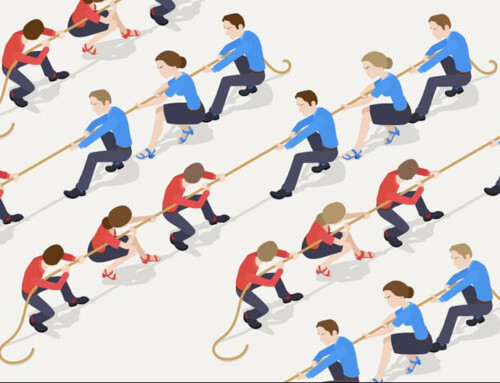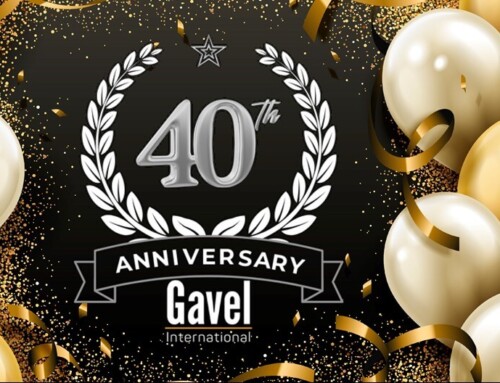Imagine a scene from Mission: Impossible: Ethan Hunt dons an incredibly lifelike mask, perfectly mimicking a high-ranking official. He strolls into a secure facility bypassing every security measure with ease. Within minutes, he’s accessed classified information and set into motion a chain of events that will throw the organization into chaos. By the time the deception is discovered, the damage is done. Reputations are in tatters, and trust is shattered.
Once upon a time, this scenario was just Hollywood fun and fiction, but today it’s reality.
In 2019, criminals used AI-based software to impersonate a CEO’s voice, successfully convincing a managing director to transfer €220,000, roughly $240,000 (USD), to a fraudulent account(1). This case, one of the first known instances of AI-based voice fraud in a corporate setting, highlights the very real threat deepfakes pose to businesses.
But the danger extends beyond financial fraud. In 2023, a deepfake video of Tesla CEO Elon Musk promoting a cryptocurrency scam circulated on social media(2). While quickly debunked, it demonstrated how deepfakes can potentially damage both a company’s and an individual’s reputation by manipulating public opinion and investor confidence.
These aren’t isolated incidents. Deepfake fraud material increased by a staggering 3,000% in 2023. The threat is evolving rapidly, with 35% of US businesses reporting a deepfake security incident in the past 12 months, making deepfake fraud the second most common cybersecurity incident(3). As deepfake technology becomes more sophisticated and accessible, organizations must remain vigilant and develop strategies to quickly identify and respond to these emerging threats.
WHAT ARE DEEPFAKE IDENTITIES?
Deepfake identities are artificially created or manipulated digital representations of individuals generated using advanced deep learning techniques. These synthetic personas can manifest across various media forms, including images, videos, audio, and text. By leveraging robust training data and sophisticated AI algorithms, deepfakes can convincingly mimic the appearance, voice, or writing style of real people. (4)
Falsified video depictions have gained the most notoriety. Deepfake video creation is explained in simple terms:
“The fake video is created by feeding the AI software a series of images, either still photos or real video, and feeding it voice clips. The software then uses those images, which will show the subject in various positions, to create an image of them that seems to be moving in real time. It also analyzes the voice recordings of the subject, which allows it to create a new voice that sounds like that of the subject, including subtle characteristics that will lend credence to the fake.” (5)
The creation of deepfake identities extends beyond human impersonation, encompassing the generation of entirely fictional personas or altering existing identities, blurring the lines between reality and artificial constructs in the digital realm. (4)
False images and videos of prominent public figures like celebrities and politicians have gained the most attention historically. However, the average person is also vulnerable to these targeted attacks – including leadership and employees within your business.
HOW CAN DEEPFAKES HARM BUSINESS REPUTATION?
Deepfake technology poses significant challenges in distinguishing authentic content from fabricated material, raising concerns about potential misuse in disinformation campaigns, identity theft, and other malicious activities. That said, it’s not a big leap to see how machine learning models could adopt the appearance, tone of voice, and even the mannerisms of, for example, the CEO of your organization. Representing the company, the deepfake could then issue statements and/or engage in conversations that inflict damage on your organization’s reputation.
The technology behind deepfakes has become so advanced that AI can now generate a voice quality that is eerily realistic. It is believable, too, as evidenced by the deepfake video of former United States President Barack Obama that fooled thousands of people. (6)
Think about it: If AI can successfully mimic the sound of a famous and distinct voice like that of former President Obama’s, it can certainly convince the general public of the validity of a video depicting your CEO:
- Making an inflammatory statement.
- Sharing the news that the company is terminating a key partnership.
- Announcing that the organization is facing financial hardship.
WHAT ARE THE BEST WAYS TO COMBAT DEEPFAKES?
Deepfakes are backed by sophisticated technology that makes them virtually indistinguishable from the real deal. In other words, you need to take them seriously. The good news is, there are effective risk management tactics you can implement to prevent or minimize the damage that deepfakes can do to your company’s reputation.
Prepare a Plan to Debunk Deepfakes
Can you stop someone from creating a deepfake? No. Can you have a plan in place to clearly communicate to stakeholders the false nature of the deepfake and prove that it is not real? Absolutely!
Your communications team, or whichever department handles disseminating information externally, will need to act quickly. The truth must come from your organization swiftly and firmly. A prompt response requires vigilant daily monitoring of all information allegedly released by your company. If you have business partners, board members, and/or investors, you will also need to that the lines of communication extend to them.
Monitoring should be performed several times each day. After all, the Internet does not take a day off. Team members tasked with this responsibility can set alerts that keep them informed and updated during the work week, as well as on weekends and holidays.
The next critical element of your plan is effectively invalidating the deepfake. Once you prove that the video or other form of media is fake, the deepfake loses its power. A new crop of tools have followed in the wake of deepfakes, with the purpose of identifying and debunking them. Notable tools include:
- Sentinel
- FakeCatcher
- WeVerify
- Microsoft Video Authenticator Tool
- Phoneme-Viseme Mismatch Detector
- Facia
Source: (7)
Since each tool is a bit different from its counterparts, your best bet is to narrow them down to a list of top contenders and choose the one that works best overall for your company’s needs and budget.
Once you have these two first steps of your plan in place, combine them to spread the word that the deepfake is not legitimate. Your organization can verify its claims with the evidence provided by the deepfake debunking tool.
Train Leadership on Deepfake Threats and Risk Management
It is a good idea to provide at least a little training on deepfakes to your entire workforce, but leadership should receive more extensive training. They must know how to manage the situation and the correct steps to take on their end if the organization is targeted by a deepfake.
An immersive offsite internal meeting dedicated to all things deepfake is one great way to educate leadership. Part of the time could be spent teaching and the other part could be spent having attendees complete exercises in which they act out different deepfake incident and crisis response scenarios. In addition to adequately preparing leadership to deal with deepfakes, these training sessions are also a great way to foster team building.
GET REAL TO DIFFUSE THE DEEPFAKES FALLOUT
The prospect of a deepfake threatening your business can seem overwhelming. But, as with any other issues that leadership faces, there are smart ways you can respond to deepfakes that help protect your company’s reputation and safeguard its good name against this ultramodern problem.
If you want to train employees on deepfake risk management at your next corporate meeting, contact Gavel International! We have years of experience organizing successful corporate meetings and events, and we can help your company achieve desired results.
_______________________
SOURCE(S):
- https://www.wsj.com/articles/fraudsters-use-ai-to-mimic-ceos-voice-in-unusual-cybercrime-case-11567157402
- https://www.coindesk.com/markets/2023/05/11/deepfake-video-of-elon-musk-promoting-crypto-scam-goes-viral-on-twitter/
- https://www2.deloitte.com/us/en/pages/advisory/articles/future-of-cyber-survey.html
- https://www.dhs.gov/sites/default/files/publications/increasing_threats_of_deepfake_identities_0.pdf
- https://www.forbes.com/sites/waynerash/2019/12/24/how-deep-fakes-can-hurt-your-business-and-what-to-do-about-it/?sh=60cec2166567
- https://www.youtube.com/watch?v=cQ54GDm1eL0
- https://www.linkedin.com/pulse/5-best-ai-deepfake-detector-tools-2024-machine-learning-1-vnxbf/
This article was last updated on April 24, 2025
- Should Your Company Hire a Chief Metaverse Officer? - January 20, 2025
- Deepfakes Can Harm Your Company’s Reputation - December 30, 2024
- The Social Side Effects of Using Artificial Intelligence at Work - November 13, 2023






